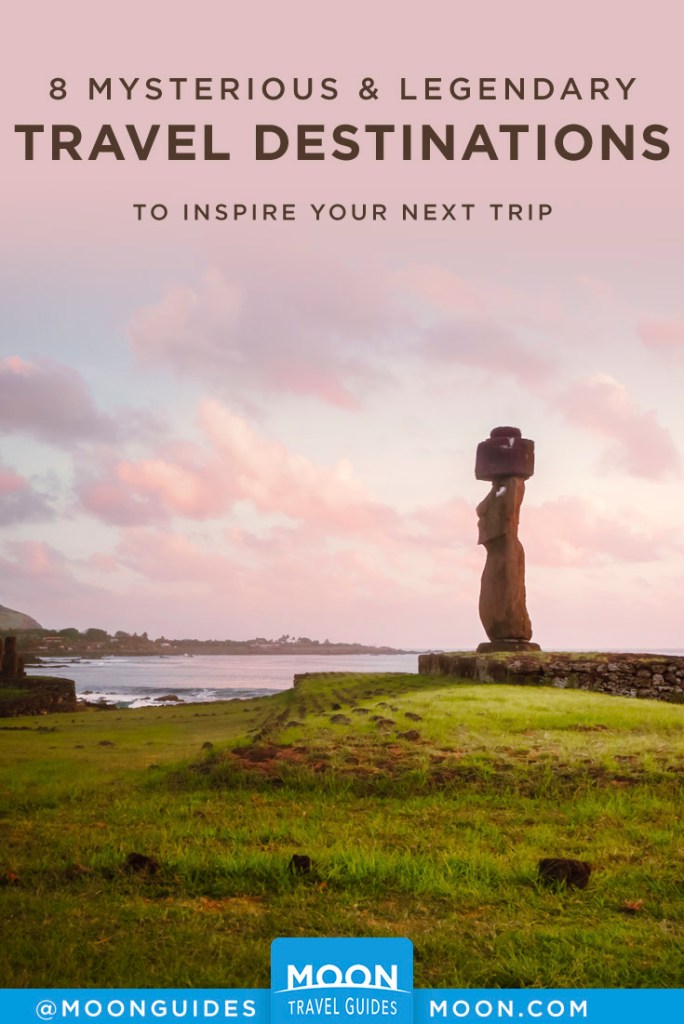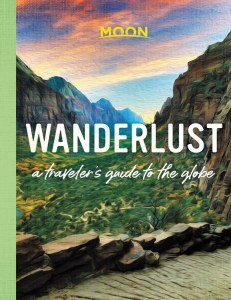8 Mysterious Locations Around the World
Nessie, the Yeti, the Knights of the Round Table, Dracula, Robin Hood…somewhat believable or completely far-fetched, pretty obscure or universally known, these legends are permanent parts of history and have brought fame to some places that might have otherwise been passed over, places that have a mysterious atmosphere where the secrets of the past still hover. Whether you believe the tales or not, legends fuel curiosity, stimulate the imagination, and attract travelers. Here is a short tour of the world through some mythic settings made famous by their lore, from Nazca to Hanoi and from Tibet to Loch Ness.
Peru
Nazca Lines
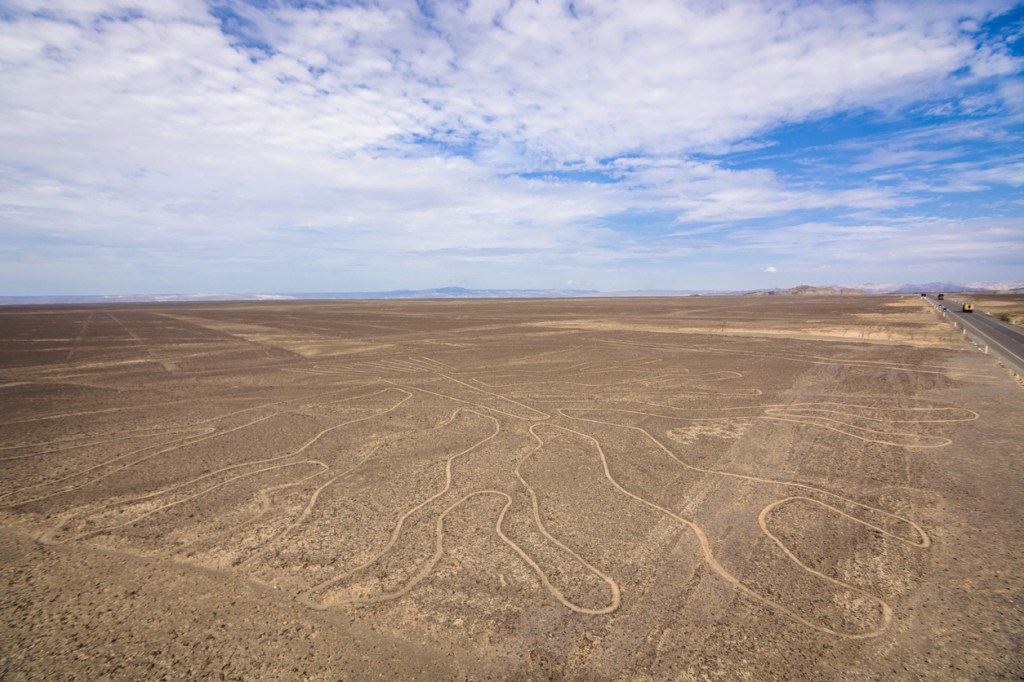
Located on the arid coastal plain of Peru, the geoglyphs of Nazca and Pampas de Jumana, discovered in 1926, still intrigue archaeologists today. These huge shapes, etched in the ground between 500 BCE and 500 CE, depict animals and geometric figures several miles long. Their impressive number, size, and regularity remain fascinating. From the sky, they appear perfectly drawn. This technical feat may be explained by a simple process—that of squaring. Most archaeologists believe that the Nazca creations are copies of figures mirroring the stars and that they record the exact movement of celestial bodies. The microclimate on the Peruvian plateau explains the exceptional preservation of the lines: the region is one of the driest in the world and it is not very windy, so nothing much happens to erode or cover the drawings. Registered as a UNESCO World Heritage site, the 350 geoglyphs of Nazca and Pampas de Jumana will amaze you with their form, size, and beauty. Take a small plane over the famous condor, monkey, birds, and other fantastic beings that form a surreal landscape. Several companies operate flights from Nazca Airfield.
Scotland
Loch Ness Monster
In the pantheon of legendary monsters, Nessie probably wins the gold medal. With black waters that are more than 650 feet (200 m) deep in places and nearly 25 miles (40 km) long, Loch Ness offers a multitude of hiding places for its legendary monster. The tale goes back to 565, when an Irish monk was reportedly attacked by a beast while swimming in the loch. Centuries later, at the beginning of the 1900s, a now-legendary photograph of the so-called monster was published and shared around the world; the legend had resurfaced from the black waters of Loch Ness. The shot turned out to be a hoax, but several hundred other people, including scientists and locals, have claimed to see bumps in the water. The dark and murky waters of the lake help perpetuate the success of the legend. Several boat tours offering tourists a chance to try to glimpse Nessie are available from the town of Inverness and the Clansman Hotel (near Drumnadrochit). They range from one to three hours, and if you give up on your search, Loch Ness, surrounded by a pine forest, is the ideal place for long walks, horseback riding, or cycling in a gorgeous setting. The Scottish Highlands more generally are home to charming authentic villages—such as Drumnadrochit and Fort Augustus—open-air productions of Shakespeare, numerous golf courses, the medieval castle of Urquhart, and the pine forests of the Glen Affric Nature Reserve, which are full of (verifiably real) animals.
Nepal
The Yeti
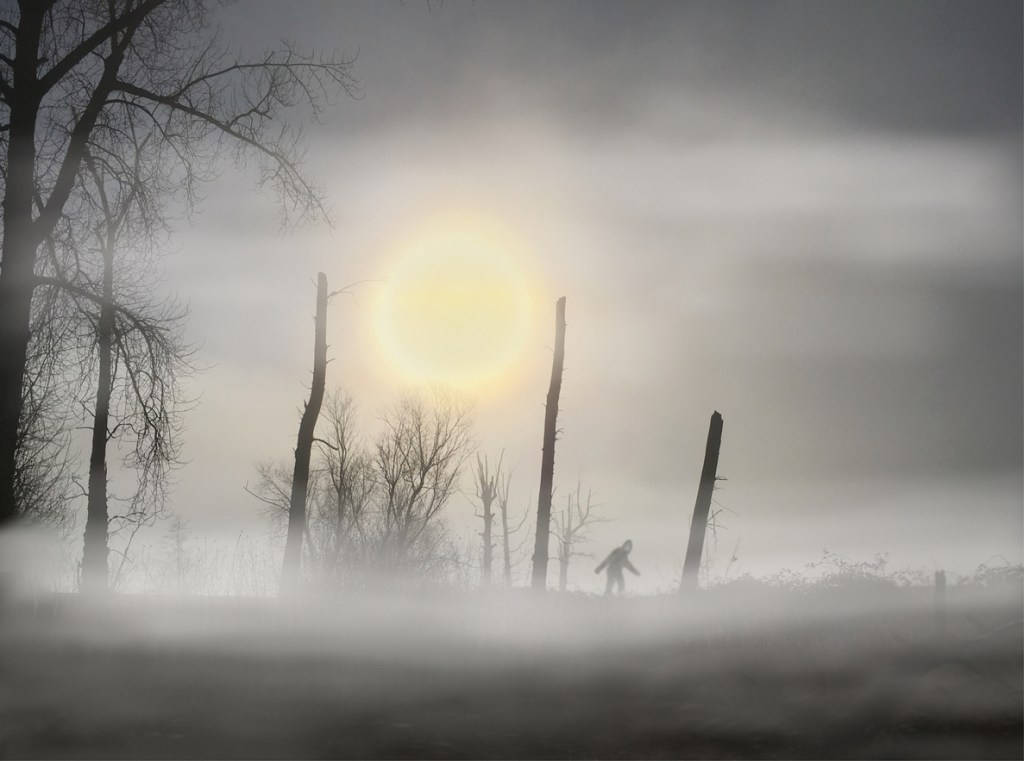
Sasquatch to the First Nations people in what is now British Columbia, Bigfoot to the Americans, the abominable snowman to others, are all names for the legend of a reclusive apeman, a legend that some believe can be traced back to one monster from Nepal: the Yeti. It all began with the accounts from explorers on the Shipton Expedition to Mount Everest in the early nineteenth century. While on the mountain, they discovered—and photographed!— giant footprints. Those who claim to have seen the Yeti (and there are many such witnesses) describe him as a giant gorilla that walks on two legs. So, mythical monster or imposing primate? Analysis of hairs found in India that were supposed to belong to the Yeti and some of the best “proof” around, have turned out to be goat hair, a rare species related to the chamois. Regardless of the evidence, or lack thereof, intrepid visitors can follow in the footsteps of the Yeti on and around the highest mountain on Earth. The Yeti is now a real brand: custom-made tours, “On the tracks of the Yeti” for example, take you to the mythical Silk Road and to “Little Tibet.” On the program: visiting villages and monasteries and trekking in the highlands of Tibet, Mongolia, and Nepal. If you want even more folklore, you can visit the temple of Pangbotchi, which houses a mummified hand attributed to the Yeti, as well as the monastery of Khumjung, which has a so-called yeti scalp. It should be noted that “scalps” are actually made from the skin and hair of a local wild goat. The Sherpas use them to play the role of the Yeti in ceremonies.
Chile
The Giant Statues of Easter Island
Easter Island is the most isolated place in the world…and one of the most mysterious. In the middle of the Pacific Ocean, 2,300 miles (3,700 km) from Chile, it is famously home to a collection of unusual statues called moai. How the moai came to be scattered all over the island remains a mystery. There are several hundred of them, measuring from 6 feet to 65 feet (2 m to 20 m) and dating from 1250 to 1500. It is believed that they were transported with logs and that they were made for religious purposes. The macabre legend of the island makes the statues all the more mysterious: it was once believed that the population, upon running out of food, resorted to cannibalism, and the eyes of the statues were made from bone and cartilage. This, however, has proven to be far more fantasy than fact. Today, many of the statues have lost their headdresses and eyes, been tipped over, or even buried, but the sight remains astonishing. Unique writing found on wooden plates adds to the mystery of the island, because the signs remain indecipherable. The other remarkable legend of the island is that of the Man-Bird. Until the nineteenth century, the “Tangata Manu,” festival was held every spring. A religious ceremony dedicated to the cult of the Man-Bird, it was followed by an egg hunt to designate the ‘Man-Bird of the year.’ Do not hesitate to give in to the magic that surrounds this island: the Rano Kau volcano, the ancient village of Orongo, the Ahu Akivi (the row of statues facing the sea), the exceptional site of Rano Raraku, and many other wonders that will be sure to move you.
France
Knights of the Round Table and the Brocéliande Forest
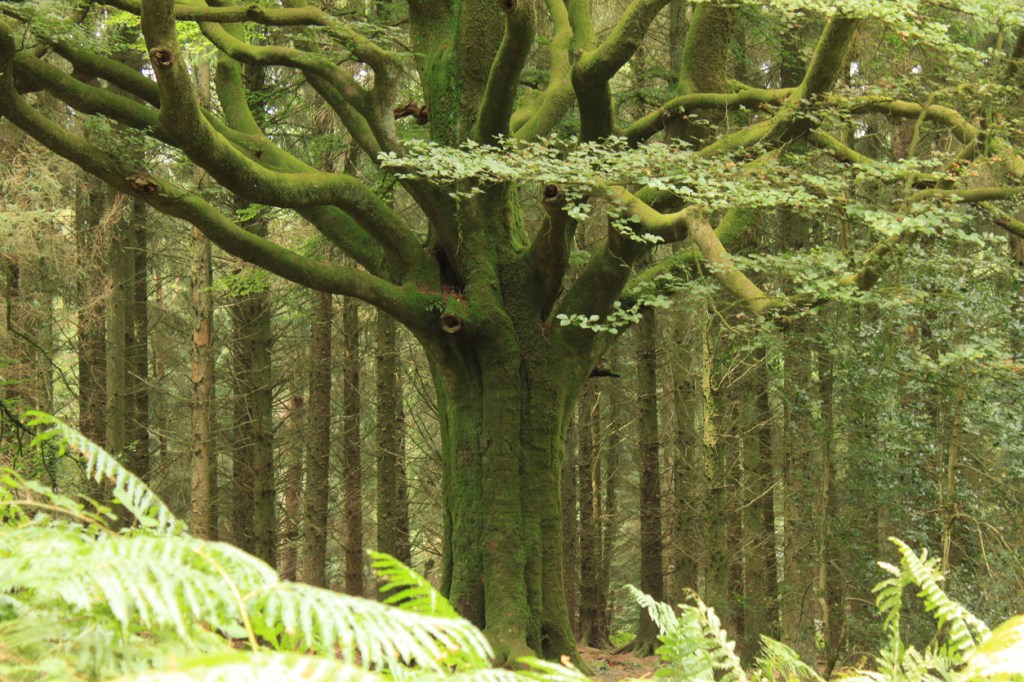
Land of druids and sorcerers, the magic forest of Brocéliande, located in the depths of Brittany, evokes its tales and legends. Go meet Morgan le Fay, King Arthur, and Merlin the enchanter in front of his tomb. This mythical forest is said to have been the setting for the exploits of Arthur and the Knights of the Round Table on their quest for the Grail. In the heart of the forest, the fountain of Barenton has supposedly been endowed with marvelous powers; according to popular belief, it has healing properties for mental illnesses. But it was above all the first meeting place between Merlin and the fairy Viviane. Good knights will not want to miss the Fountain of Youth and Comper Castle, other iconic places from the Arthurian legend. Treasure hunts offered to tourists will take you back in time to search for the Grail alongside Arthur and Lancelot. Let yourself be carried away by the legend of the mysterious menhirs of Lampouy, classified as a historical monument. These standing stones were placed in alignment with the sun and the moon. It is said that a strange phenomenon happens on Christmas Eve—as soon as the first stroke of midnight sounds, the menhirs will drink at the nearest river. While they’re there, the treasures buried at their feet will be revealed, but fair warning to those who would steal them: at the twelfth stroke of midnight, the huge stones quickly go back to their places and crush would-be thieves under their weight!
Vietnam
The Magic Sword of Hoán Kiêm Lake in Hanoi
This fabulous story is one of the most famous founding myths of Vietnam. In the heart of Hanoi, Hoán Kiêm Lake (which means “restored sword”) is the setting of a legend from the fifteenth century. One day, a poor fisherman was given a magic sword by a sacred turtle from the lake to defend the kingdom against the Ming invaders. It is said that he roused the Vietnamese people, won many victories, and became sovereign. But later, while he was walking on the edge of the lake, the sword was caught by the turtle, who returned with it to the watery depths. Surprisingly enough, a huge turtle shell was later fished out, which is enough to fuel the legend to this day. In the middle of the lake, considered the most beautiful in the city, is Turtle Island, with its square-form stupa, which pays tribute to the sacred animal. In front of the door, a small tower is the last vestige of one of Hanoi’s oldest pagodas. On the shores of the lake, the statue of King Lê Loi with the sword recalls the legend. All around, striking views draw the eye: this is one of the favorite walks for young lovers at dusk. Rich in legends, the whole city is a gem just waiting to be enjoyed. Hanoi’s marvelous temples and pagodas will bathe you in a mesmerizing atmosphere.
Romania
Dracula in Transylvania
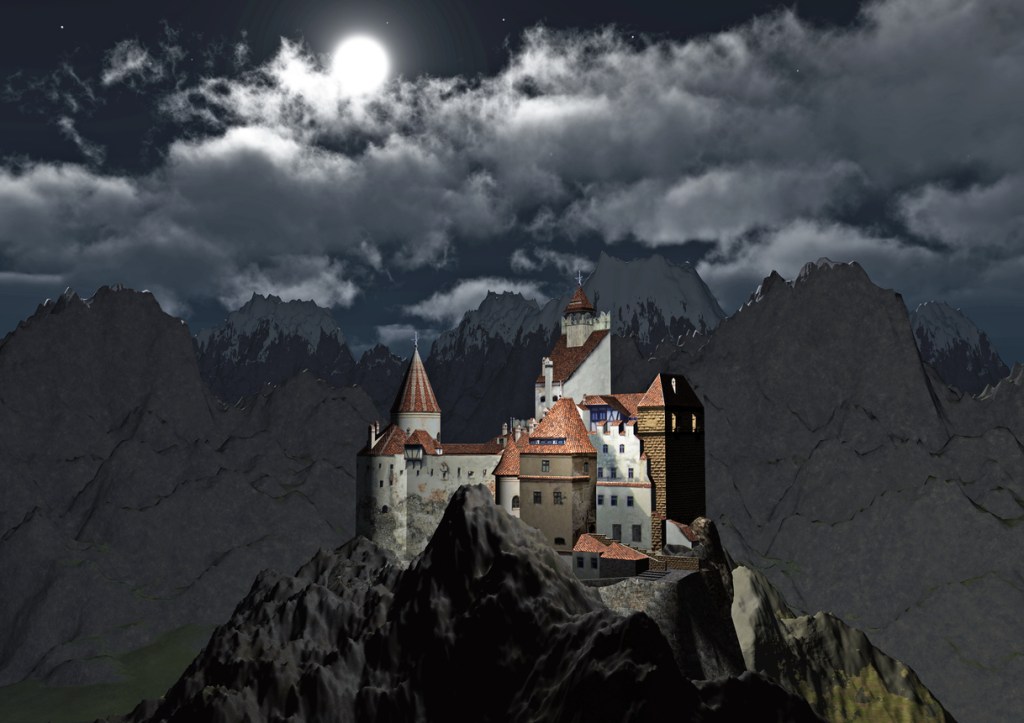
Dive into the fantastic world of Count Dracula across the Carpathians—specifically, in Transylvania. Long before being immortalized by Bram Stoker in 1897, Dracula was a historical figure. Son of Vlad the Dragon (Vlad Dracul), as he was called, Vlad the Impaler is best known for his authoritarian politics and cruelty. Nicknamed Vlad the Impaler by his enemies because, well, he impaled people, Vlad was feared and respected by his people. His methods of torture made the Romanian prince a bloodthirsty hero—so it wasn’t a giant leap to terrible vampire. Many paths trace the places mentioned in Stoker’s famous novel. The itinerary for the “In Search of Dracula” tour lets you visit the castle (or citadel) of Poienari and the small medieval town of Sighisoara, where legend has it that Dracula was born. You can also take part in a wine tasting (red, of course!) in the vineyard of Dracula in Lesinta and have lunch at the hotel La Couronne d’Or in Bistrita, in the north of Romania, which became famous after being mentioned in the book. Another tour, guided by the director of the House of Dracula hotel in Brasov, gives you the chance to discover the beauty of the region by hiking through the Bargau Mountains. Standing at an elevation of more than 3,280 feet (1,000 m) near the Tihuta Pass, the hotel, with its medieval air, was created with Stoker’s description of Castle Dracula in mind. Special evenings, with masked balls and Dracula-style costumes, are organized to re-create the atmosphere of the time. Be sure to pack a clove of garlic and a crucifix if you plan to walk around at night.
UK
Stonehenge
Mystic, imposing, an emblematic symbol of Great Britain, Stonehenge has stood for five thousand years in Wiltshire County and has fascinated people for millennia. Enthusiasts and scientists alike have tried to find meaning in this monument, but Stonehenge—which translates as “hanging stone”—has far from revealed all its secrets. It has long been thought that this alignment of megaliths was linked to the course of the sun in the sky and the cycle of the seasons: it could have served as a calendar. A block would indicate the horizon point where the sun rises during the summer solstice, while the smaller stones, to the southeast, would indicate the location of the sunrise at the time of the winter solstice. However, a few years ago, archaeologists discovered a multitude of human bones on the site. A new theory was born: Stonehenge as a giant burial site. Some archaeologists are even convinced that, given that many of the skeletons showed signs of trauma, the place was an important healing center—a kind of ancient spa retreat where miracles took place. Classified in 1986 as a World Heritage site by UNESCO, Stonehenge is the most sophisticated prehistoric stone circle in the world from an architectural point of view.
Discover more of the world’s most interesting places with the ultimate travel inspo book:
By clicking ‘Sign Up,’ I acknowledge that I have read and agree to Hachette Book Group’s Privacy Policy and Terms of Use
Pin it for Later
